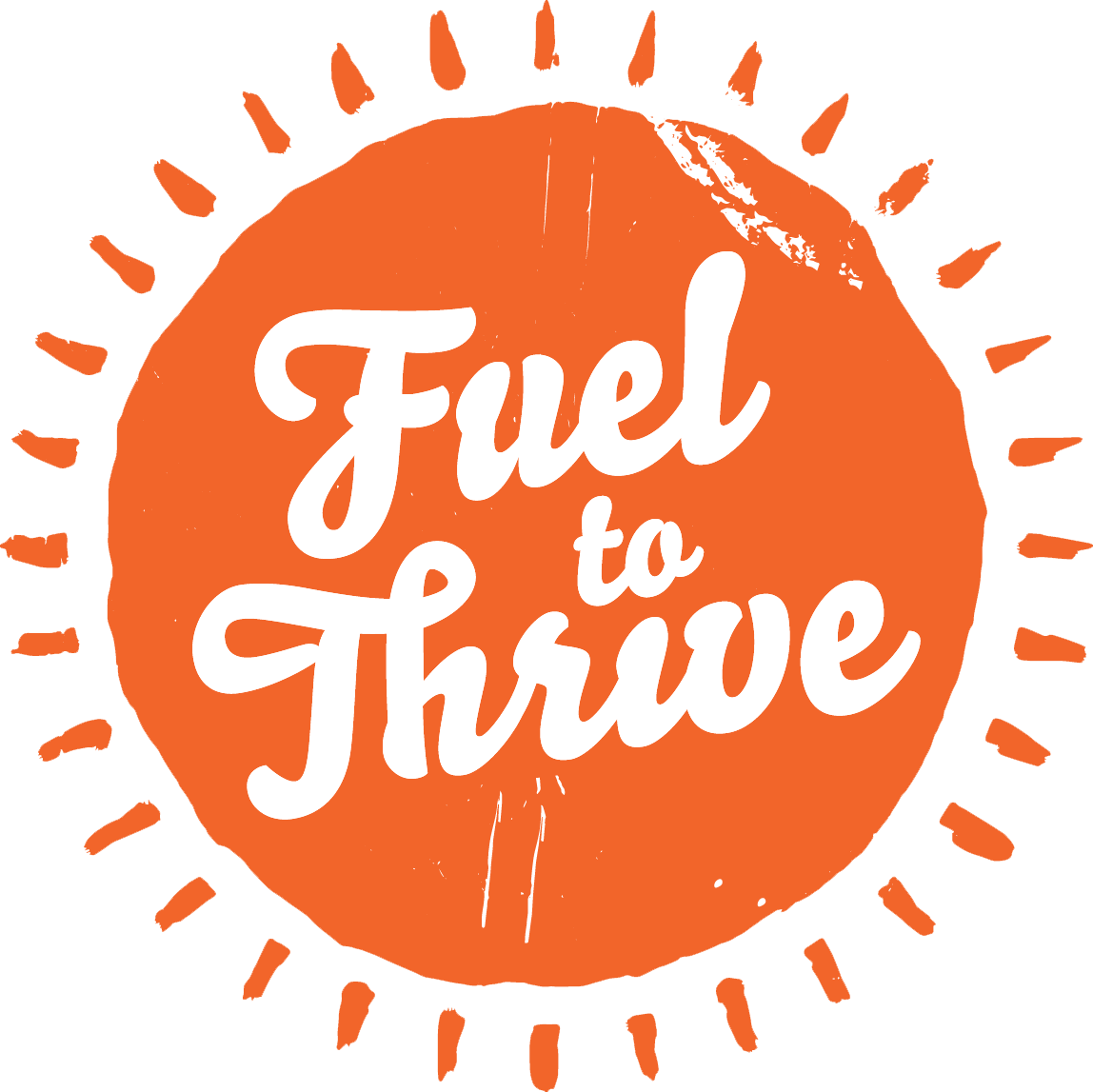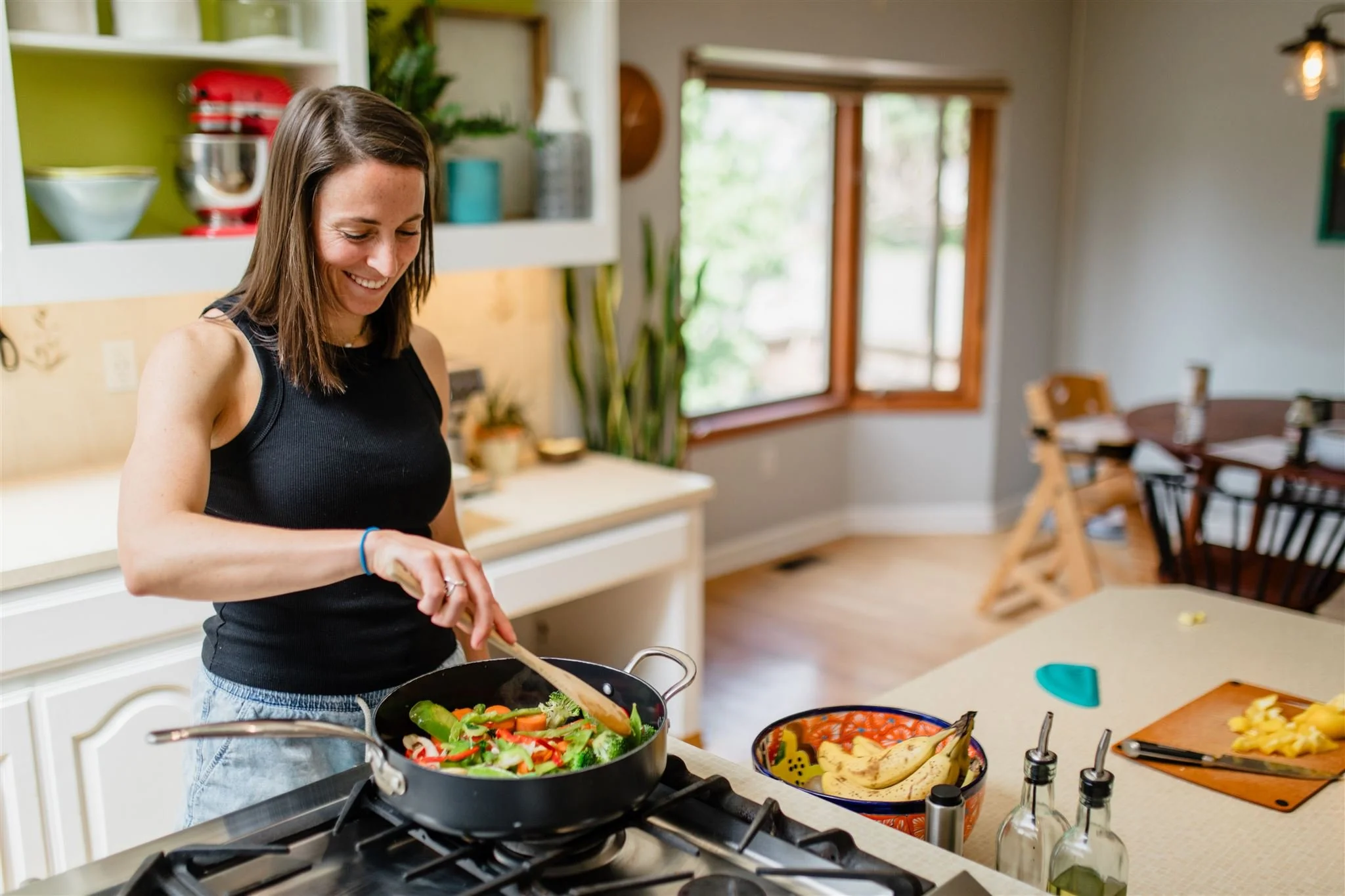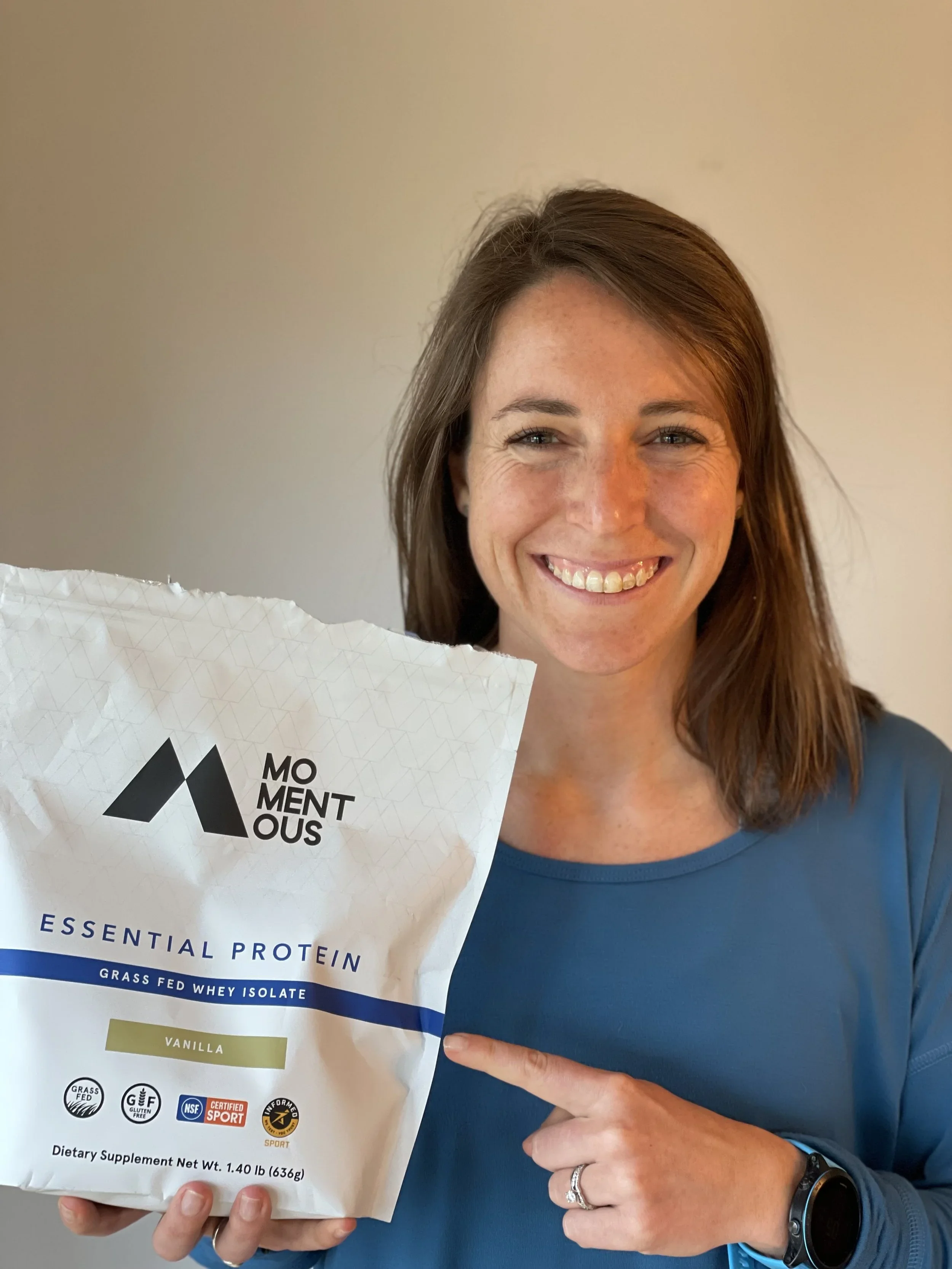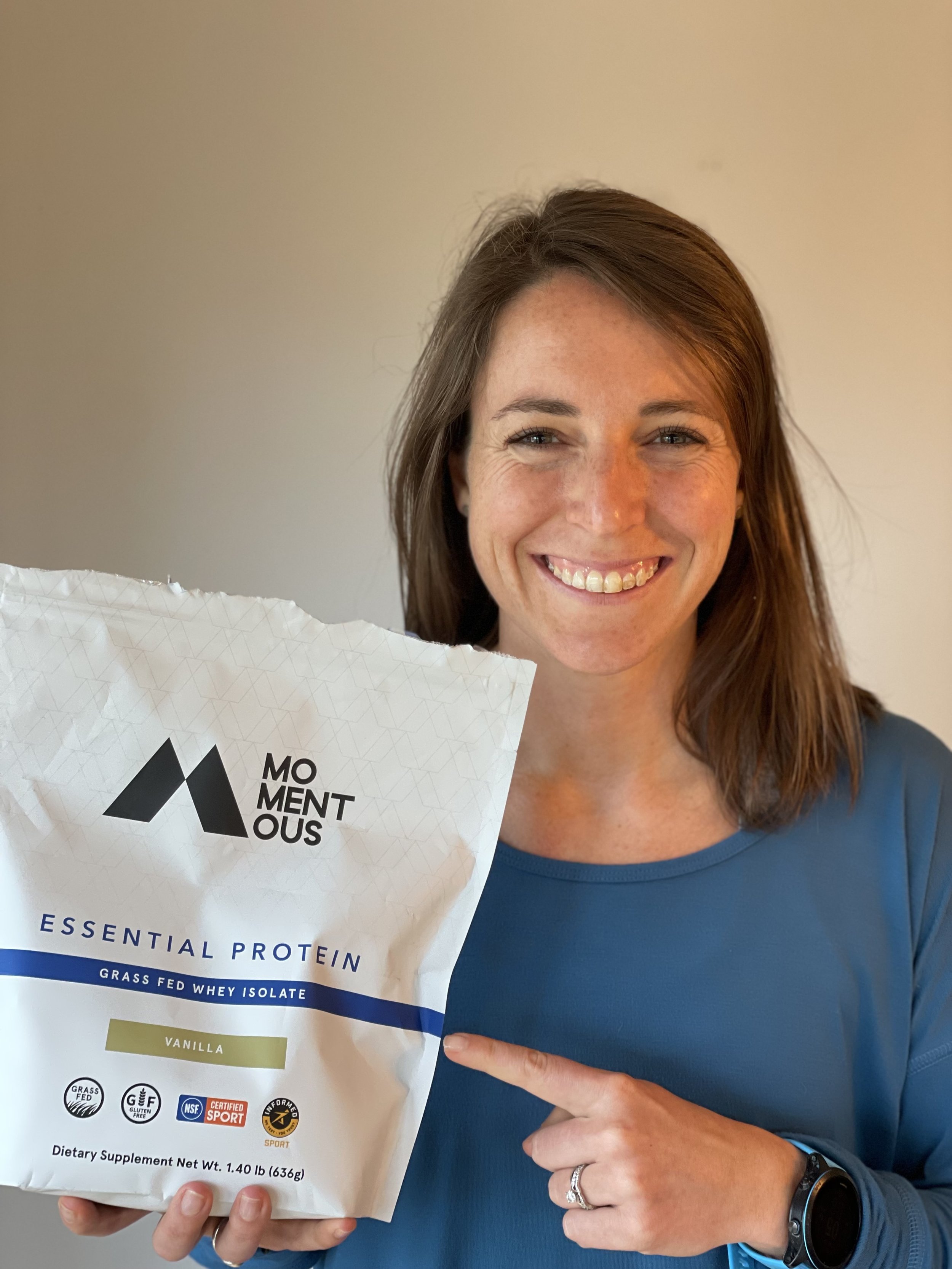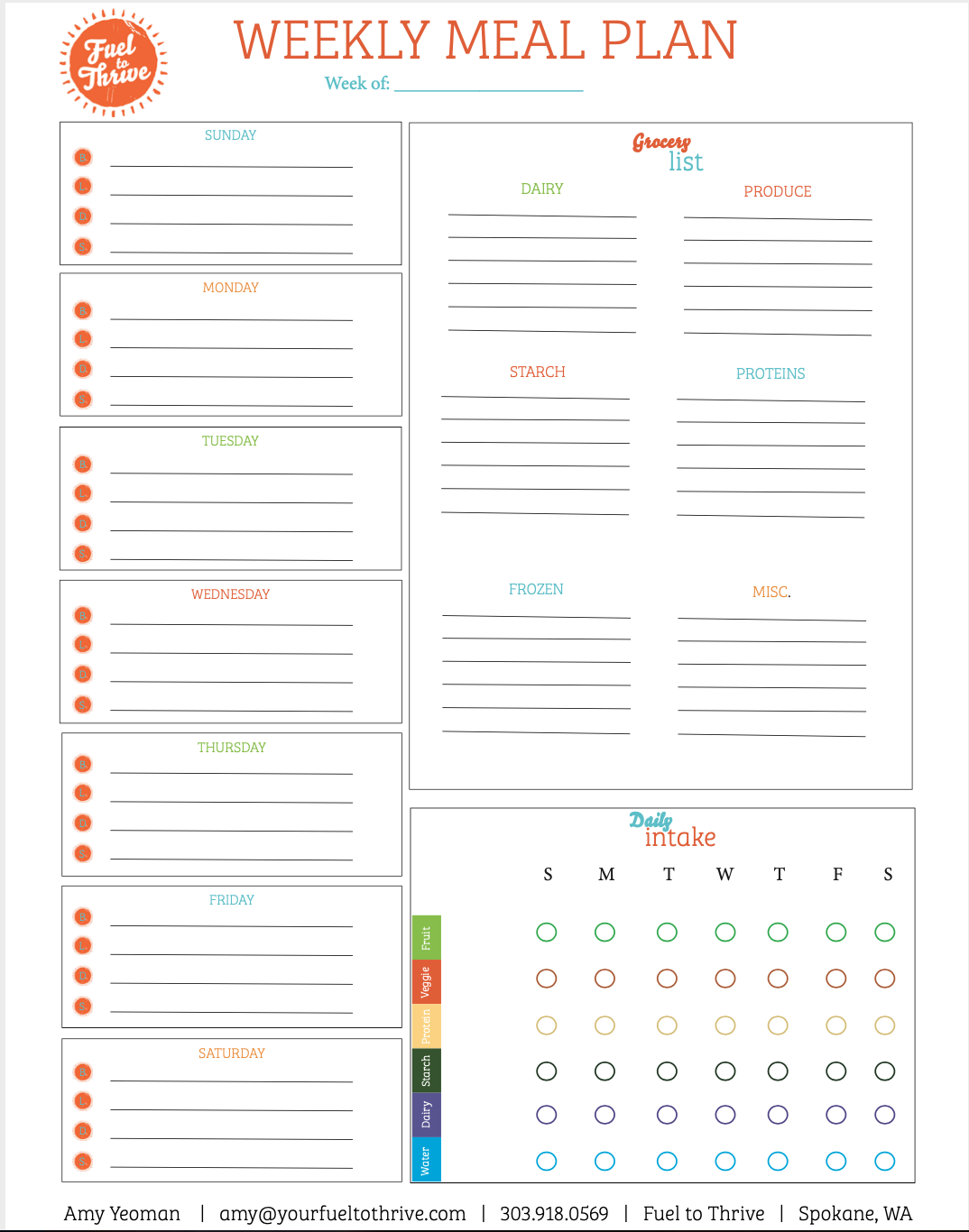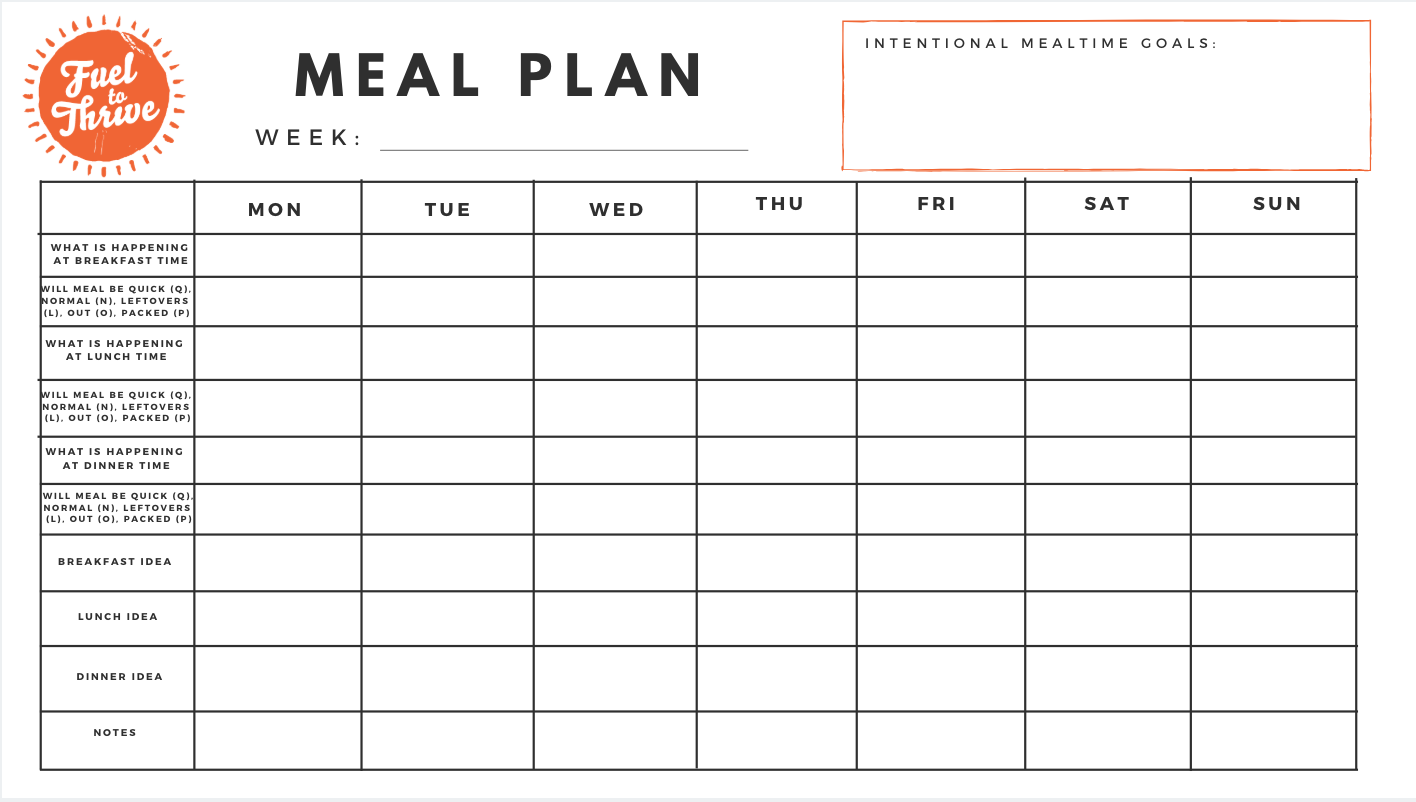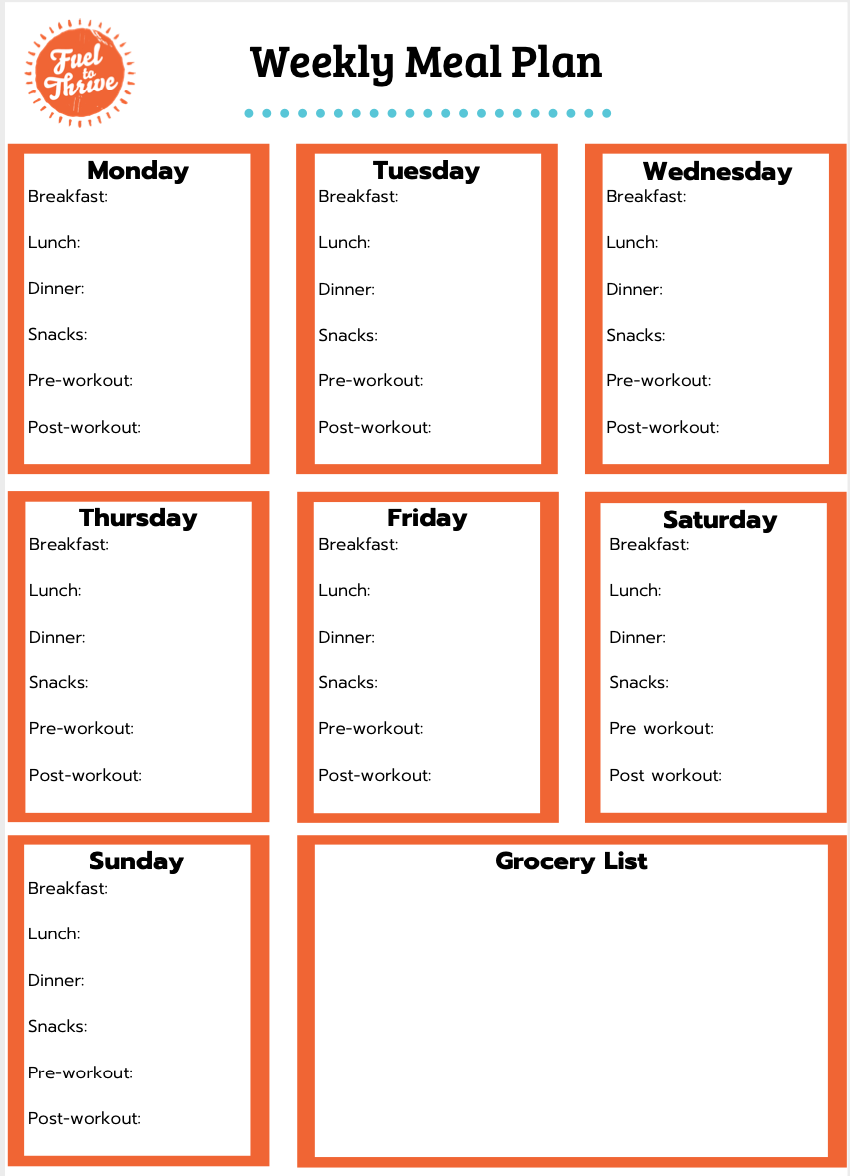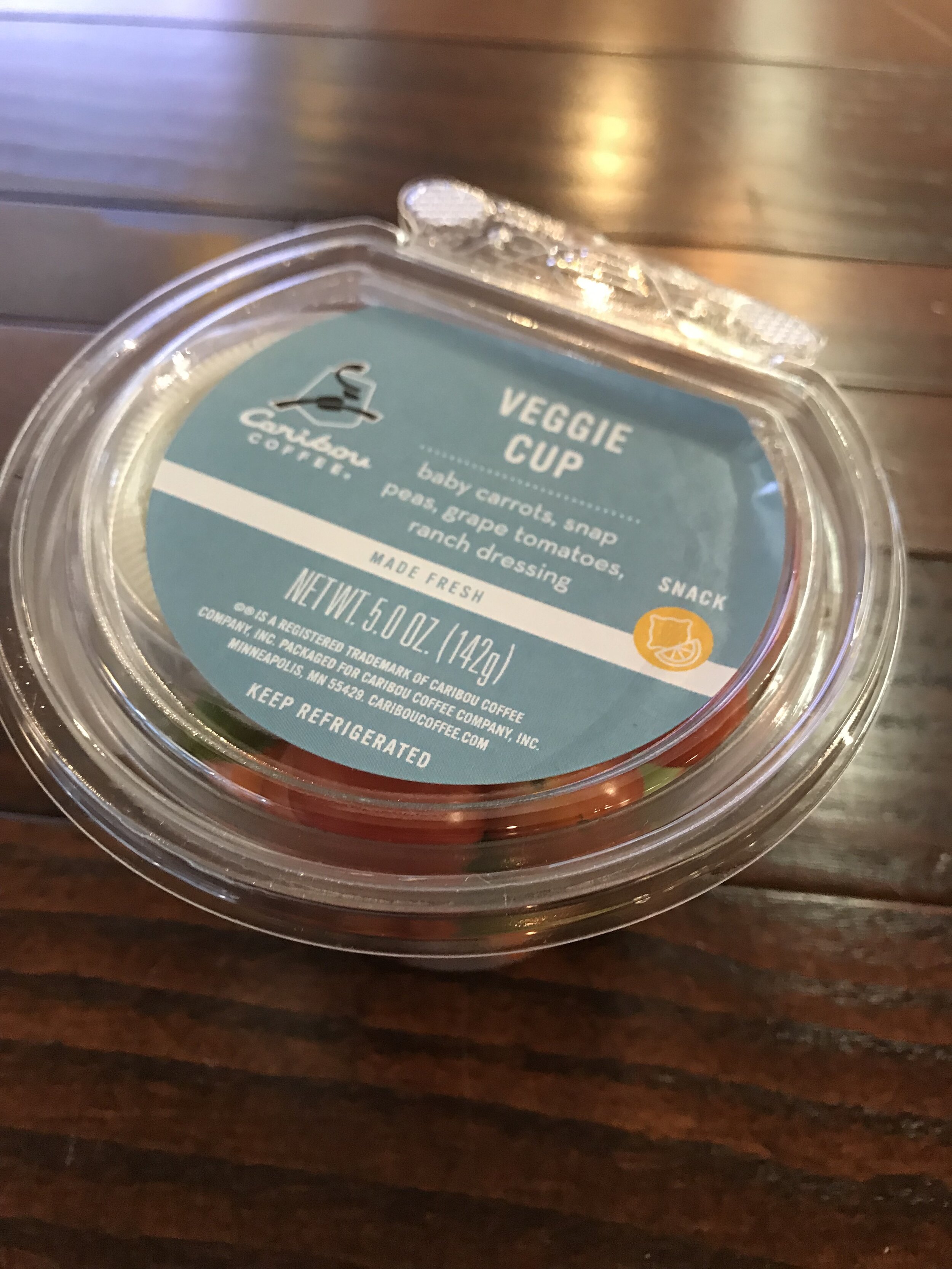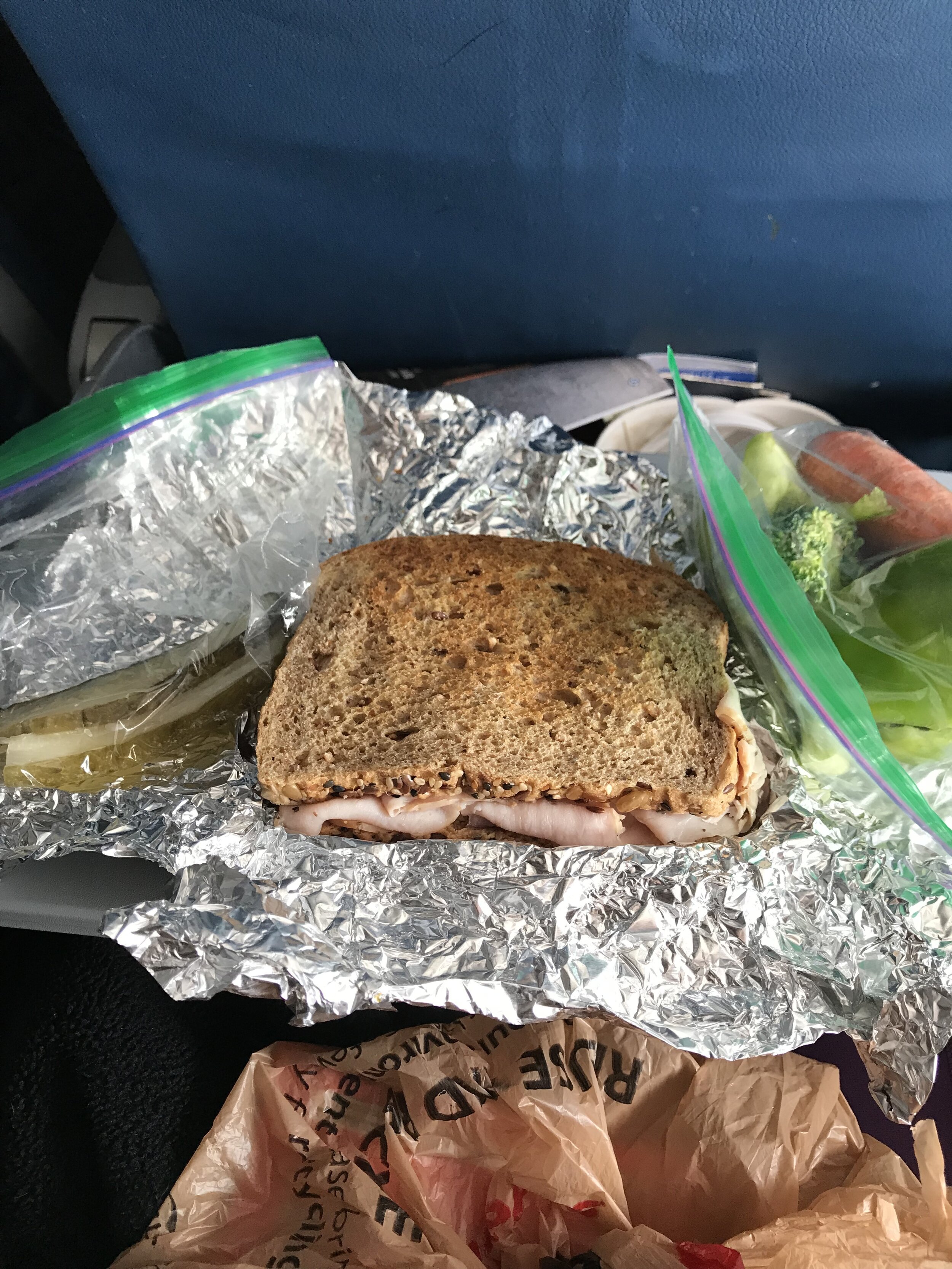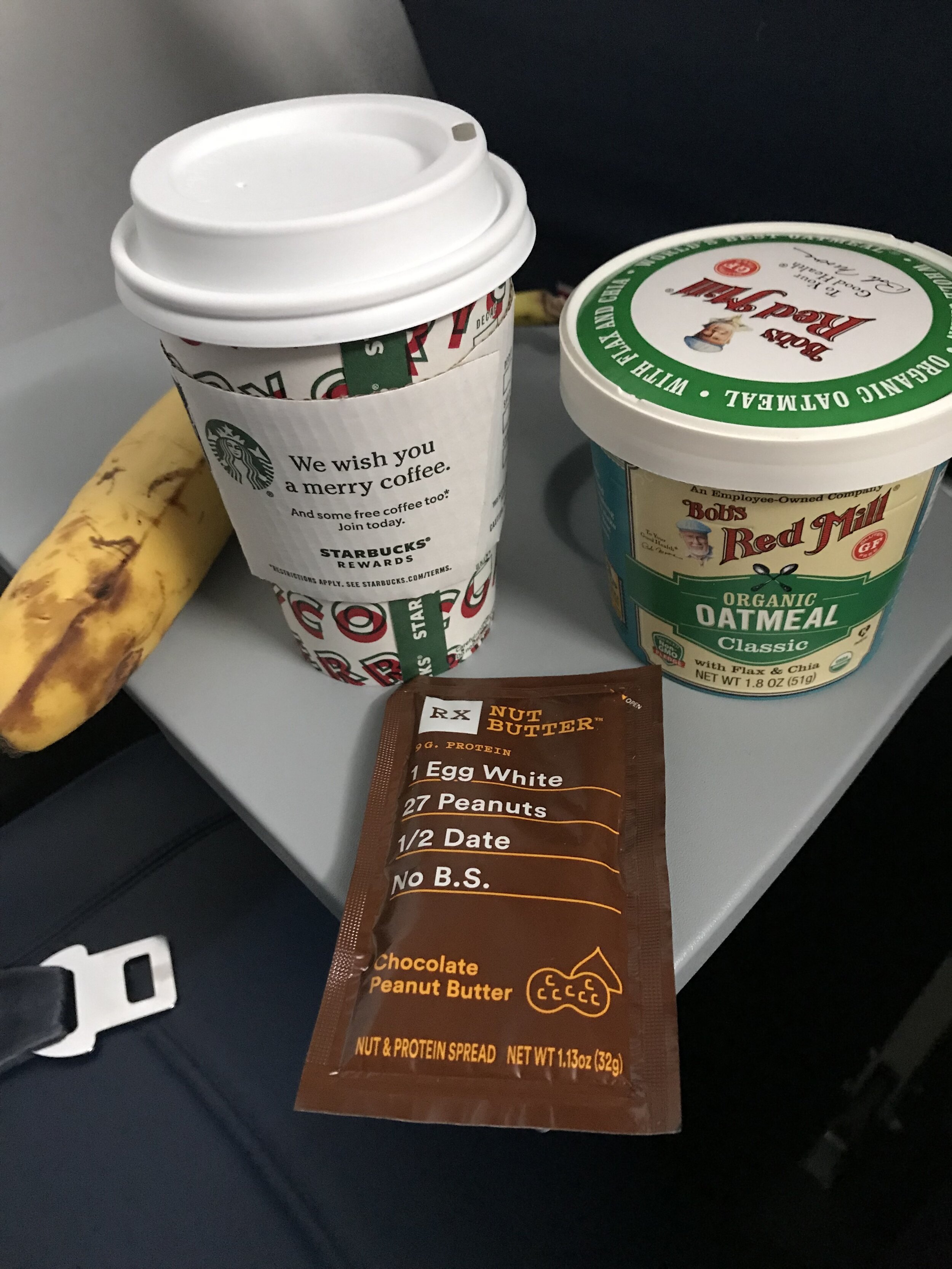Finding Balance During the Holidays: A Dietitian in Private Practice Perspective (Plus the BEST Cinnamon Roll Recipe)
Enjoy your favorite holiday foods without guilt. A dietitian private practice shares tips for balanced eating plus a beloved family cinnamon roll recipe.
Wow! Is anyone else kind of dumbfounded that it’s already Christmas time again?! As fast as the year has gone, I truly LOVE this season. And this year is extra special—it's the first time we’re really seeing the magic of Christmas through Keely’s eyes. So fun!!
What People Think Dietitians Do During the Holidays…
As a private practice dietitian, I hear a lot of assumptions about this time of year. Most people think we dread the holidays because they involve so many treats, rich meals, and food-centered celebrations. They imagine our job is to tell people to avoid all those things and “stay accountable.”
I’m here to tell you… that is definitely not true.
In my dietitian private practice, Fuel to Thrive, we help clients understand that food is more than fuel—it's tradition, connection, comfort, celebration, and joy. The holidays are a perfect example of that.
ABOUT US: SPOKANE NUTRITIONISTS
We are a group of registered Spokane dietitians and personal trainers who have a passion for helping you feel in control of your health.
We work mainly with athletes, those with chronic GI conditions, and women in perimenopause and menopause. We create customized nutrition plans to empower and educate you in your health journey.
Why Holiday Traditions Matter
Our team at Fuel to Thrive all has certain foods we look forward to each holiday season (and no, it’s not the “healthified” version—we enjoy the real thing over here!).
In my family, some of our classics include:
Molasses cookies
Anything chocolate peppermint (my request!)
And always… our traditional Cinnamon Roll Recipe for Christmas morning
This recipe has been a part of my life for as long as I can remember.
A Healthy Secret: Eat Intentionally, Not Restrictively
Here’s a truth I share often with clients in my dietitian private practice:
You don’t have to avoid holiday foods—you just want to eat them intentionally.
For example, we could totally eat just cinnamon rolls for Christmas breakfast. But instead, we balance things out by serving them with:
Eggs
Fruit
Often bacon too
This helps create a meal that includes:
Protein
Fat
Fiber
Carbs (hello cinnamon rolls!)
Why this matters:
A balanced breakfast keeps you fuller, longer.
Instead of feeling like you need 3 cinnamon rolls to get full (and then take an afternoon nap), the protein + fat helps with satisfaction and energy.
You still get to enjoy your favorite foods—just in a way that supports how you want to feel the rest of the day.
To me, this doesn’t feel restrictive… it feels like a win.
Enter This Holiday Season With Joy, Not Guilt
As you move through your holiday traditions, I hope you:
Skip the shame
Let go of the guilt
Practice intentional balance
And most importantly… ENJOY your food!
THE Cinnamon Roll Recipe
Ingredients
Basic Sweet Dough
3⁄4 cup milk
1⁄2 cup sugar
1 1⁄4 teaspoons salt
1⁄2 cup butter
2 packages dry yeast
1⁄3 cup warm water (110–115°F)
3 eggs, at room temperature
5 1⁄2–6 1⁄2 cups flour
Filling Mixture
3/4 cup brown sugar
3/4 cup sugar
1⁄2 cup butter
1⁄4 cup flour
1 1⁄2 tablespoons cinnamon
1⁄2 cup chopped nuts (optional)
Caramel Glaze
1⁄3 cup evaporated milk
2 tablespoons brown sugar
1 1⁄2 cups powdered sugar
1 teaspoon vanilla
Directions
Make the Dough
Combine milk, sugar, salt, and butter in a small saucepan. Heat over low until butter melts and sugar dissolves.
Cool to lukewarm.
Dissolve yeast in warm water.
Add milk mixture, eggs, and 5 cups flour.
Using a dough hook, mix 2 minutes on speed 2.
Add remaining flour 1/2 cup at a time until dough clings to the hook and pulls away from the bowl.
Knead on speed 2 for 2 minutes.
Place in a greased bowl, turn to grease top, cover, and let rise until doubled (about 1 hour).
Punch down dough and shape for rolls.
Make the Filling
Mix filling ingredients with flat beater on speed 2 for 1 minute.
Roll dough into a 10 × 30-inch rectangle (1/4 inch thick).
Spread filling evenly.
Roll tightly from the long side; pinch to seal.
Cut into twenty-one 1.5-inch slices.
Place 7 rolls each in 3 greased 8-inch cake pans.
Cover and let rise until doubled (about 1 hour).
Bake at 350°F for 20 minutes.
Remove from pans and top with caramel glaze.
Make the Caramel Glaze
Heat milk and brown sugar over medium until it begins to boil.
Place milk mixture, powdered sugar, and vanilla in a bowl.
Beat with flat beater on speed 4 until creamy (about 2 minutes).
Pour over cinnamon rolls
ENJOY!
If you are making these ahead of time, make them completely and then warm them up on Christmas morning!!
We all are wishing you and your family a holiday season filled with celebration, good food, and fun!
About Fuel to Thrive
Fuel to Thrive is a dietitian private practice based in Spokane, dedicated to helping women in perimenopause, athletes, and individuals with GI concerns build a healthier, more confident relationship with food. Our approach is compassionate, realistic, and centered on intentional, sustainable habits—never restriction.
If you’re looking for personalized support, accountability, or guidance around nutrition, hormones, digestive health, or sports fueling, we’d love to work with you.
Ready to connect with a dietitian?
Mom Athlete Guide: Postpartum Nutrition and Marathon Fueling
Discover practical tips for balancing motherhood, training, and proper nutrition. Learn about marathon fueling plans, postpartum nutrition in Spokane, and guidance from a Spokane nutritionist for endurance athletes. Fuel your body, prioritize your health, and thrive as a mom athlete.
Balancing Motherhood, Training, and Proper Nutrition
Since becoming a mom, I’ve realized that moms are literal superheroes. Taking care of kids, managing a household, making sure everyone is fed, socialized, and healthy—all while prioritizing your own body, relationships, and passions—is nearly impossible! Through this journey, I’ve learned a lot (and am still learning) about assessing priorities and allocating time and energy effectively.
For me, training has become essential—not just for fitness but for mental health. These moments are my escape, a way to clear my mind and focus on something I can control. Proper postpartum nutrition has been a critical part of sustaining my energy, supporting recovery, and fueling my training as a mom and endurance athlete.
Before you read further: If you’re a mom, please don’t compare yourself to me. This is meant to share insights and hopefully inspire you to prioritize your health, nutrition, and fitness.
Assess Your Capacity
Understanding your energy and time limits is key. There’s only so much you can do in a day, so prioritizing nutrition and training wisely is essential. My current routine works for me now, but that can change as life evolves—and that’s okay.
Schedule, But Stay Flexible
Planning is important, but flexibility is vital. Kevin and I plan our week together, scheduling workouts and other priorities. Most mornings, I’m up at 5 a.m. for training before Keely wakes up. If that doesn’t work, I find creative ways to fit in a workout around naps or bedtime. Some days, things simply don’t happen, and that’s fine.
ABOUT US: SPOKANE NUTRITIONISTS
We are a group of registered Spokane dietitians and personal trainers who have a passion for helping you feel in control of your health.
We work mainly with athletes, those with chronic GI conditions, and women in perimenopause and menopause. We create customized nutrition plans to empower and educate you in your health journey.
Fuel Your Training: Nutrition Tips for Endurance Athletes
Balancing marathon fueling plans with life as a mom requires intentional nutrition:
Prioritize protein and healthy fats to sustain energy
Include complex carbs for long runs
Hydrate consistently, especially during workouts
Prep simple, nutrient-dense meals that work for your family
Consider consulting a Spokane nutritionist for customized nutrition plans tailored to postpartum endurance training
Accept That What You Give Is Enough
Your pre-baby routine may not be realistic anymore—and that’s okay. Your postpartum training and nutrition will look different, and it’s important to embrace your new normal.
Tips for Embracing Your New Season:
Let go of comparison to your pre-baby self
Adjust expectations for workout intensity and timing
Explore new ways to fuel your body effectively
Celebrate consistency over perfection
Time With Your Kids Is Precious
Sometimes that means skipping a run to have pancakes with your kids—and that’s okay! Both motherhood and endurance training can coexist, but balancing them requires conscious effort.
You Can Be Both a Mom and an Athlete
With intentional planning, proper nutrition for endurance athletes, and realistic expectations, you can thrive as a mom athlete in Spokane. Both roles can complement each other beautifully.
Half Ironman World Championships in New Zealand
A Spokane nutritionist and endurance athlete shares her experience racing the Half Ironman World Championships in New Zealand. Learn practical tips on Ironman nutrition, triathlon fueling plans, and family travel from a dietitian specializing in customized nutrition plans for endurance athletes.
Spokane Nutritionist on Triathlon Fueling and Endurance Nutrition
This adventure has been a long time coming, and I wanted to share my experience traveling to New Zealand for the Half Ironman World Championships from my perspective as a mom, athlete, and Spokane nutritionist. My husband Kevin and I both qualified, which was a dream come true. As a dietitian and endurance athlete, it was also an incredible opportunity to test everything I teach about Ironman nutrition, customized nutrition plans, and real-life triathlon fueling while juggling parenthood.
Traveling to New Zealand with a 14-Month-Old
We knew the trip would be a logistical puzzle—two races, all our gear, and a 14-month-old in tow! But we also knew we didn’t want to leave our daughter, Keely, behind. Between both of us racing, hauling bikes and baby gear across the globe, and exploring nearly the entire length of New Zealand, I started to wonder if we were completely crazy for attempting it. Spoiler: we were—but it was absolutely worth it.
Getting There and Exploring the Country
Traveling from Spokane to New Zealand was surprisingly manageable. We flew Spokane → San Francisco → Auckland, with one long overnight flight. Despite the 21-hour time difference, it felt like only a 3-hour shift, which helped our rhythms adjust fairly easily.
We rented a camper van (mainly to carry all of our stuff!) and spent time in:
Auckland
Waiheke Island
Coromandel and Hahei
Taupo (race location)
Kaikoura
Mt. Cook
Te Anau and Milford Sound
Queenstown
From Queenstown, we flew back to Spokane via Auckland and San Francisco.
The landscape was unlike anywhere else—starting like Hawaii and ending like Alaska. Every region offered something new. The people were warm and welcoming, the facilities spotless, and the playgrounds next-level. Everything felt family-friendly, which made the experience even better.
In three weeks, we slept in nine different beds, camped two nights, and became pros at entertaining a toddler while loading and unloading bikes and baby gear daily.
Prepping for the Race Abroad
As an endurance athlete and dietitian, I had to rethink my usual Ironman nutrition and triathlon fueling plan while adjusting to a new country. One of the best decisions we made was buying a used bike trainer off Facebook Marketplace for pre-race workouts. It made training much easier, especially with the opposite-side road setup and new environments.
Staying consistent with shorter workouts before the race helped us keep fitness up without overdoing it. We ran, biked, and even squeezed in a few swims leading up to race day.
Carb Loading Challenges in New Zealand
Carb loading for an endurance race abroad was unexpectedly tricky. Even though New Zealand is an English-speaking country, food labeling differs from the U.S.—serving sizes are based on weight, and familiar items like bagels were hard to find. It took effort to understand portion sizes and carbohydrate content. We did get to try some new and fun things for our carb-load including Gingernut Cookies and Sherbert Fizz Candy (both of which may be things we order for future carb-loading).
ABOUT US: SPOKANE NUTRITIONISTS
We are a group of registered Spokane dietitians and personal trainers who have a passion for helping you feel in control of your health.
We work mainly with athletes, those with chronic GI conditions, and women in perimenopause and menopause. We create customized nutrition plans to empower and educate you in your health journey.
Race Day: Half Ironman World Championships in Taupo
This was my third 70.3 World Championship, and it felt like the most relaxed by far—very on-brand for New Zealand! Unlike other races where you line up an hour early, we were playing at the park until 20 minutes before Kevin’s start time.
Swim: Lake Taupo was stunning. The clear, calm water helped me hit a swim PR thanks to perfect conditions.
Bike: The first half was fast, but the second half had a long, steady climb with headwind and chipseal roads that slowed everything down. It was tougher than expected.
Run: Advertised as flat—but it wasn’t! Between the unexpected hills and the thin ozone layer making 75°F feel like 90°F, it was a mental and physical grind. I had to dig deep, but I pulled out another PR on the run.
Overall, I was thrilled with my performance. Racing alongside world-class athletes and hearing cheers in multiple languages was inspiring. Fourteen months postpartum, I was proud to see how strong and capable my body felt again.
The toughest part? Waking up early the next day to support Kevin’s race with Keely in tow!
Final Thoughts
This experience reminded me why I love both racing and my work as a Spokane nutritionist. Balancing life as a mom, athlete, and dietitian gives me a unique perspective on creating customized nutrition plans for endurance athletes—whether you’re preparing for your first triathlon or your next Ironman.
If you’re training for a big race or planning your own triathlon fueling plan, remember: the best experiences often come from doing the hard, slightly crazy things.
Our Thoughts on New Year's Resolutions
Start 2025 with realistic health and wellness goals for endurance athletes and everyone. Our Spokane nutritionist offers customized nutrition plans, marathon fueling plans, perimenopause meal plans, and nutrition for menopause support to help you take sustainable baby steps toward lasting results.
Supportive Guidance from a Spokane Nutritionist for Endurance Athletes, Menopause Support, and Lifestyle Changes
Happy New Year!
The start of a new year is a unique time in the nutrition and wellness world. As a Spokane nutritionist running a dietitian private practice, I notice the tension between the pressure to market services around “New Year, New Me” resolutions and the desire to genuinely support people—endurance athletes, those navigating menopause, and everyone else—in achieving their goals. Our focus is on helping you accomplish meaningful health and performance milestones, whether it’s improving daily nutrition, training for a marathon, following a marathon fueling plan, or creating a perimenopause meal plan.
Reflecting on New Year’s Resolutions
The new year provides a moment to reflect on what has been and what could be. It’s an opportunity to evaluate what changes might help you thrive—whether in life, nutrition, or training. Many of us feel energized by the start of a new year and imagine how we can “do it all.” The truth is, big goals are exciting, but they often need to be broken down into manageable steps.
Tips for Achieving Health and Nutrition Goals
One of the best ways to set yourself up for success is to take baby steps. Here’s how to approach it:
Focus on one small, consistent action that moves you closer to your goal
Once that step feels easy, add the next
Keep the plan realistic and achievable so you can build confidence and momentum
ABOUT US: SPOKANE NUTRITIONISTS
We are a group of registered Spokane dietitians and personal trainers who have a passion for helping you feel in control of your health.
We work mainly with athletes, those with chronic GI conditions, and women in perimenopause and menopause. We create customized nutrition plans to empower and educate you in your health journey.
A Personal Example
I’ll share a personal goal for 2025 to illustrate this approach. Between the first year of motherhood, running Fuel to Thrive, and training for 70.3 Worlds last year, my social life took a back seat. My resolution is to plan one evening out with a friend each month. That’s just 12 events a year—small enough to actually happen, but meaningful enough to improve my well-being. Trying to do something every week would have felt impossible and would likely lead to disappointment. By starting with a baby step, I can create sustainable change and even add more if it feels manageable.
How a Spokane Nutritionist Can Help
Whether you’re an endurance athlete, training for a marathon, navigating menopause, or simply working on health and wellness goals, a dietitian private practice can provide:
Customized nutrition plans for endurance athletes, menopause, and everyone
Guidance for marathon nutrition and marathon fueling plans
Perimenopause meal plans to support hormonal health and energy
Practical strategies to integrate baby steps into your daily routine
Support for achievable, sustainable health and fitness resolutions
Starting small can lead to big results. If you’re feeling overwhelmed or unsure how to reach your goals, we would love to walk alongside you in 2025 and help you make lasting, meaningful changes for your health, nutrition, and wellness.
Everybody Needs to Eat and Other Truths about Meal Prepping.
Struggling to figure out what to eat? Learn how to build balanced meals with simple meal planning tips from a Spokane nutritionist. Discover easy, nutritious recipes with the perfect balance of carbs, protein, and produce to fuel your busy life—without the stress.
ABOUT US: SPOKANE NUTRITIONISTS
We are a group of registered Spokane dietitians and personal trainers who have a passion for helping you feel in control of your health.
We work mainly with athletes, those with chronic GI conditions, and women in perimenopause and menopause. We create customized nutrition plans to empower and educate you in your health journey.
Everybody needs to eat.
Whatever your body type, activity level, and whether or not you “have time” to eat, literally everyone has to do it.
And yet, so often we stand in front of the fridge or pantry, overwhelmed by the options or lack thereof, wondering what sounds good or what our bodies actually need. We get distracted or go for the bag of chips because it’s close and easy and then pray for our sanity when 5 o’clock rolls around and the kids start asking what’s for dinner.
Sound familiar?
At Fuel to Thrive, we are all about making nutritious, intuitive eating practical and accessible to every person. If meal prep and planning have felt paralyzing or ineffective for you in the past, then stick around. We’re here to help you gain some tips and tricks that should add delicious, easy food and NOT more tasks to your plate!
In the next four weeks, we will be sharing emails that help you meal plan by giving you access to tried and true recipes that are nutritious and delicious. But to get us started, let’s talk about what works when it comes to meal planning.
When we first think about planning a balanced meal, we want to think about three key components:
1. A starch, 2. A protein, and 3. A fruit or vegetable. That’s it - so simple!
Great examples of starches can include pasta, bread, potatoes or sweet potatoes, rice, and so on. You won’t hear us demonize carbs; they literally fill our stomachs and give us the energy we need to keep going throughout the day!
Protein is crucial and we want to focus on getting enough protein on any given day. Meats, eggs, beans, and legumes are all great sources of protein.
And yes, we said a fruit or vegetable. You’re a real person with a real life. Grab a banana or some berries at breakfast and add carrots, cucumbers, greens, broccoli, and so on to your lunches and dinners.
With these three items, you have all of the building blocks you need for a strong nutrition plan.
Over the next month, we’re going to be sharing practical recipes that hit on the three categories above that not only nourish you and your family, but also taste good, won’t break the bank (in fact, you’ll probably even save some money!), and keep your food prep time to a minimum.
Subscribe to our email chain today so you don’t miss anything along the way!
A Client Success Story: a testament to consistency!!
ABOUT US: SPOKANE NUTRITIONISTS
We are a group of registered Spokane dietitians and personal trainers who have a passion for helping you feel in control of your health.
We work mainly with athletes, those with chronic GI conditions, and women in perimenopause and menopause. We create customized nutrition plans to empower and educate you in your health journey.
This is an example of everything we believe in at Fuel to Thrive… progressive lifestyle change over time! Notice how this client did not do a drastic diet or jump into a whole new fitness routine. He build habits over time and stuck with them. Also, notice how his journey started in early 2021 and he reached his goal weight in May 2022.
LONG TERM LASTING CHANGE TAKES TIME & CONSISTENCY!
Please read that again….
Ready to feel motivated?! Heres the success story….
Background
I’ve always had a “large” frame and been overweight since I was probably 12 years old. During high school and my first two years of college I was probably at my healthiest. I was part of the WSU football team and played as an offensive lineman. As part of that role I weighed up to nearly 300lbs by the time I graduated in 2004. After graduation I lost a lot of weight in the first two years and was able to reach 240lbs fairly easily as that’s where my body naturally seemed to balance out at.
Before My Journey Began….2015 - Oofda
I didn’t really work out with resistance training in any form or fashion and did very little cardio but I have always been active and spent a lot of time hiking, kayaking, or being up and around on weekends as part of my hobbies. This level of activity took my body weight to about 230lbs but my cholesterol was high, my energy levels started lagging, and I just didn’t feel like I was living up to my potential or setting the stage for the next couple chapters of my life.
Motivation
I turned 40 in January of 2021 and over the course of the year started really thinking about what the rest of my middle age years and after would look like (midlife crisis perhaps?). Lisa (my wife) has worked for Fuel to Thrive since late 2020 and had been sharing stories of the successes Fuel’s principals and training were having with their clients. While I wasn’t overly out of shape, I wasn’t making any progress and was steadily gaining weight and losing what little muscle tone I had left. In late 2021 I decided that I was finally tired enough of the way I looked and felt to take action.
The Beginning of My Journey… Summer 2021- Dad bod status achieved!!
Actions Taken
Using Fuel’s principles and training I started working out in January of 2022. I had a general idea that I wanted to get “fit” but I wasn’t sure what I even wanted that to look like. I use the term “working out” in the most general terms which involved doing three sets of 10 push ups and 3 sets of 30 crunches 3-5 days a week. This was the most I could do at the time and I was pretty sore for the first couple weeks. I kept up with the pushups and crunches and added lunges and a little bit (20 minutes twice a week) of jogging. I started to see weight come off after the second or third week and was able to add the number of pushups weekly until I was doing three sets of 50 by early February. By mid-February I had dropped about 15lbs and was really starting to get motivated. At that time, I ordered a simple collapsible weight bench, some resistance bands, and started using a set of concrete filled vinyl dumbbells (you know the ones) to do bench exercises and add weight to my leg routines. I also started really paying attention to the Fuel to Thrive principals of exercise balance and training and using MyFitness Pal and tracking calories to achieve a goal bodyweight of 200lbs.
Seeing results leading to motivation…March 2022
By early March I had dropped from 235lbs to 203lbs and could really see the results. I had the beginnings of a six pack, and my man boobs were looking more like pecs each week. Furthermore, the increased weight training was leading to an increase in my metabolism which was making the weight loss/maintenance almost easy. In addition to looking and feeling better I was realizing that the lifestyle and diet were going to be totally sustainable. I didn’t have to completely eliminate any of the foods/drinks I love and just had to keep track of what I was consuming. After mid February, the weight loss slowed for a couple weeks but it wasn’t discouraging since I was really close to my goal and could see physical changes taking place on a weekly basis and by early May I reached my goal weight!
May 2022….Goal Weight Achieved!
At that point I started setting new goals for muscle gain and body composition and started incorporating more cardio (30-45 minutes 2-4 times a week) and using a wider variety of resistance exercises to reach the whole body. At this point my goal is to continue to add muscle mass and just see how far the journey can take me. I’ve never felt physically better in my life, I’ve got a six pack for the first time ever, and I have 100% confidence that I can maintain my fitness and nutrition indefinitely without having to eliminate things I love eating or drinking. Fuel to Thrives’ approach to a sustainable fitness journey have made the changes sustainable so I can see the progress without being miserable in the process!
The Truth About Protein Powders
I swear I get asked on the daily about protein powders… do I recommend? How much? Which brands? What to look for? So…. Here is your guide to all the questions about protein powder you may have!!!
I even linked some of my favorite brands at the bottom!!
How Important is Protein Powder in Achieving Your Goals?
Too often, people rely on a pill or powder in an attempt to hit a new health or fitness goal, rather than focusing on what matters most: nutrition, progressive overload, sleep, stress, and time management. In reality, a supplement can only provide a slight benefit (less than 5%), even when these other factors are really dialed in. However, there are a few exceptions. A high-quality protein powder is something we do recommend for some.
When Should You Supplement?
We recommend a supplement when a client has a high protein goal that they are struggling to reach. For example, a client who is vegetarian might have a hard time getting enough plant-based proteins in. Maybe a busy athlete needs a quick and convenient protein source to support recovery. Even those looking to lose weight can have higher protein goals, and a protein supplement makes that goal attainable. Sometimes, having just one or two extra servings of protein daily can make things significantly easier.
ABOUT US: SPOKANE NUTRITIONISTS
We are a group of registered Spokane dietitians and personal trainers who have a passion for helping you feel in control of your health.
We work mainly with athletes, those with chronic GI conditions, and women in perimenopause and menopause. We create customized nutrition plans to empower and educate you in your health journey.
What Should I Look For?
When choosing a protein supplement, there are a few key things to look for to make sure you are getting a high-quality, effective, affordable source of protein.
Amount of Protein
You want at least 20 grams of protein in a single serving, and the serving size should ideally be 1 scoop. By maximizing the protein content and minimizing the serving size, the protein powder will be convenient, easier to track, and likely more affordable.
Source
Not all protein sources are created equal. Some proteins are better utilized in our bodies than others, so even if the label says “20g of Protein”, you might not be using it completely. Whey and Casein proteins are the most ideal. If you are dairy-free, Soy protein is a very good option for you. If you are looking for a vegan powder, look for one that has a combination of proteins, such as rice, pea, hemp, potato, etc. (having 3 or more sources is ideal).
Leucine
Now that you have chosen a good source of protein, you can then consider the Leucine content of it. Protein is made up of amino acids, and Leucine is one that plays a very important role in building muscle. Research shows that having 2-3g of Leucine with each serving of protein maximizes the effect that protein has on the muscles. Generally, a balanced meal of lean protein, carbohydrates, and vegetables, will have that Leucine content. But for protein supplements, making sure it has the right amount of Leucine, if available, is recommended.
Other Nutrition Facts
Your protein supplement shouldn’t have a bunch of unnecessary carbohydrates, fat, and calories. Those are best obtained through more whole-food sources. Avoid a supplement that has more than 5g of carbohydrates or 3g of fat. Save those for your meals!
Cost/Value
Don’t assume that because a protein powder is the most expensive on the shelf, that it is of superior quality. Do some research to find a protein powder that fits your budget, but also has the other factors listed in this blog.
Recommended Brands
Look for a supplement that is third-party tested to ensure you are getting what you pay for and nothing potentially harmful or allergenic. The gold-standard is NSF and Informed Choice. Look for these logos:
A few brands we recommend:
Not Sure If You Should Be Supplementing?
Reach out to one of our dietitians to see if a protein supplement might be right for you in helping you hit your health or fitness goals!
3 Diet Changes To Improve Fitness
ABOUT US: SPOKANE NUTRITIONISTS
We are a group of registered Spokane dietitians and personal trainers who have a passion for helping you feel in control of your health.
We work mainly with athletes, those with chronic GI conditions, and women in perimenopause and menopause. We create customized nutrition plans to empower and educate you in your health journey.
This may surprise you, but yes, I am always working on my nutrition as well! Whether it’s mindset around food, or certain habits, I am always challenged to make changes that fit my goals. So, I thought I’d share some of the things I have been working on!
My current goal:
I am currently in full swing training of Coeur d’Alene Half Ironman. My volume is high. Fatigue and time constraints are real.
Things I am Already Doing:
This is important to say because it is easy to skip over foundational pieces that are essential to our goals.
Eating 3 meals + 2+ snacks a day
Listening to my hunger
Eating enough protein
Focusing on fruits and vegetables
Planning meals ahead (most of the time)
Fueling my workouts well
Three things I am working on:
Getting enough carbs
As volume increases carbs become more and more important to performance and recovery. I am not counting carbs, but I am purposefully including them in each meal and snack and reaching for them when I am hungry or tired.
As an athlete, I think it is valuable to have a minimum amount of carbs you are eating a day, and know what that portion at each meal and snack is, and then understand you can and should add more when you need it and when volume increases.
Sometimes these carbs are fruit or brown rice or oats and sometimes they are pretzels and fig bars and cookies… and that’s called balance!
Including beans/lentils at least 1x per week
This became a goal after I did my InsideTracker bloodwork (contact me for discounts). I have always enjoyed beans and lentils, but have not worked to include them regularly. Beans and lentils are full of fiber and great plant sources of protein.
I do not always have success with meatless meals, because I often end up hungry after and the fiber can be rough on my GI system during runs, SO I have started to just include these along with meals I am already making.
An example…. include black beans with your tacos or taco bowls.
Also, for the record, I buy canned (low sodium) beans and rinse them… so you can do this too. It is not “unhealthy” or “too processed,” It is actually convenient and easy!
Reach for anti-inflammatory foods
These foods have all the rage right now!! As an athlete, they help with recovery and repair. All fruits, vegetables, whole grains, and healthy fats can be anti-inflammatory.
Here are some tips:
The richer the color of fruit or vegetable, the more anti-inflammatory it is
Look for fats with omega 3s
Some ways I am including anti-inflammatory foods:
Adding flax meal to my oatmeal
Opting for tart cherry juice when I want something sweet at night
Including walnuts in snacks
Adding frozen berries to anything and everything
Making sure I am getting 3+ servings of vegetables a day
The Take-Aways
Diet changes don’t have to be extreme
The changes you are making should reflect your goals
Be realistic with your changes
Think ahead of ways to make your changes successful
As always, if you need help knowing what diet changes to make for your goals, please reach out!
My Favorite Products as a Dietician
Guys! I have been wanting to do this forever and am very excited to finally be doing it! I wanted to make a page that you can land on to find products that I recommend frequently (and use myself too!) Check it out!!!
ABOUT US: SPOKANE NUTRITIONISTS
We are a group of registered Spokane dietitians and personal trainers who have a passion for helping you feel in control of your health.
We work mainly with athletes, those with chronic GI conditions, and women in perimenopause and menopause. We create customized nutrition plans to empower and educate you in your health journey.
Food:
SNACKS:
PB2: Add to yogurt, smoothies, pancakes… anything really!
RXBar Nut Butters: These are great traveling snacks!
RXBar Oatmeal: Find out how I use these here
Whole Grain Triscuits: My go-to cracker!
BARS:
WORKOUT NUTRITION
Gogo Squeeze Applesauce: Great pre-workout and/or during workout.
Fig Bars Great pre-workout and/or during workout.
Graham Crackers Great pre-workout and/or during workout.
Lyte Balance Electrolytes Everyday hydration
Skratch Labs Hydration (strawberry lemonade): Shorter workout hydration
UCAN: Great for workouts lasting longer than 60 min
Hammer Perpetuem (Cafe Latte): Great for workouts lasting longer than 60 min
Hammer Endurolytes Fizz: Great for post workout hydration
GU Gels: Great for workouts lasting longer than 60 min
Science in Sport Gels: Great for workouts lasting longer than 60 min
Clif Bars: Great for workouts lasting longer than 60 min
Fuel for Fire: Quick post workout snack
Noka Smoothie: Quick post workout snack
COOKING to add flavor:
Spiceology Spice Mixes (any of them)
Trader Joes Green Goddess or Carrot Ginger Miso Dressing
Salsa (always)
more to come….
The Key to Success: Meal Planning
Who is tired of stressing out about what to eat for dinner every night?
During this quarantine season, I can imagine you feel the stress even more without the freedom to go to the store everyday to grab something your forgot. Meal planning can make your life easier, your grocery shopping trips less stressful, save you money, and can help you feel more in control about what you are eating and feeding your family. Not to mention, keep your risk of catching COVID-19 down by limiting your trips to the store!!
I truly believe having a plan is one of the most important ways to eat well. When plans aren’t in place, last minute and convenient decisions are made, which let’s be real… aren’t always the best decisions.
I hear from clients over and over again, that they feared planning food would limit their food freedom. Once they get in the habit, they all say that having a plan gives them more freedom! When you don’t have to stress about what to make for dinner every day, you have more brain power to enjoy and do other things!!
I know, it can be a dreadful process, but once the process is in place it becomes a tool for success, and you will get to the point where you aren’t willing to not utilize that tool… because you know how it will lead to your success.
Here are a couple tips on meal planning:
Think about meals and what is going on around those times:
Will you need to pack food? Have a quick meal? Utilize leftover? Will you feel like cooking?
Be realistic and recognize your time and energy restrictions!!! Thinking through these things can prevent that situation that we’ve all been in… You get home late, had a plan to make a full meal. Then you ran out of time and energy and your left eating PB&J and cereal, feeling like you failed cause you didn’t eat as planned.
Utilize leftovers!
Think about breakfast, lunch and snacks!
I often see that when people meal plan they only think about dinner, which leaves your scrambling for the rest of the day!
Think about fresh ways to use normal ingredients.
I can’t even tell you the amount of different meals we’ve made with chicken and rice! Use spices; look for a cuisine you haven’t tried making before; think about your favorite flavors when you eat out and try to replicate at home!!
Balance your meals, always!
Each meal should include a protein, starch and fruit or vegetable. Plan it that way!
Make a list, and check it!
There is nothing more frustrating than forgetting an ingredient or buying something you already have!! Eliminate this issue by checking what you have and making sure all ingredients you need are on your list.
Meal planning can be so helpful in keeping you and your family eating healthy AND it can save time, stress and money.
Check out these resources to help you meal plan better!
Menu subscription:
Do you feel like you run out of ideas when it comes to fresh meals? Let me help by sending you 3 meals a week that include a complete grocery list and meal prep instructions!!
Meal Plan Guides:
Organize your meal plans! These are 3 templates that I encourage you try out now!!!
Option 1: This guide will help you keep your week, days and grocery lists all in one place!! It even helps you keep track of your nutrient intake daily!
Option 2: This guide will help you think through each meal of the week and plan according based on what is going on around that meal and what type of meal you need to have.
Option 3: This guide is a simple way to help you organize and plan your week!
And I will leave you with this: a goal without a plan is just a dream, so plan your food out!!!
At Home Workouts: No Equipment, No Worries!
One of the coolest ways I’ve seen the community adapt to this COVID-19 quarantine is the amount of ideas being shared for at home workouts. Kevin and I have been doing at home workouts with very limited equipment. It has been great to get our bodies moving, but sometimes workouts just don’t feel as challenging when done with body weight. I wanted to share some extremely practical ways of making movements more challenging.
Add weight: get creative!! You have heavy things around your house, I know you do! Find ways to make them carry-able… grab a backpack and get creative with what you can throw in it.
I found a Costco bag of rice and textbooks. You can also fill water bottles with water. Bags of dog food are heavy. Cans are heavy. Just find some heavy stuff and throw it in a backpack!
How to utilize for a workout:
Place either on your back or your front to vary the load. You can do squats, lunges, deadlifts, 1 leg deadlifts, push ups, planks, jumping jacks, sprints, step ups, dips and many other movements with this.
Carry it: you can do squat presses, strict presses, farmers carry.
Move it: you can do wallballs, sit ups, kettlebell swings, cleans, toss it back and forth. Whatever you do, make sure the straps are tied in so they don’t whack you in the face.
At home workout:
4 rounds
30 lunges
20 squat press
10 push ups
400 m run (weight on your back)
Jump: jumping adds an element of power and speed, both of which will challenge more than a non jumping movement. Jumping will also get your heart rate up.
How to utilize in a workout: mix in jumping and non-jumping movements into your workout. Movements that can include jumping are: squats, lunges, push ups (for some), jumping jacks, tuck jumps, high jump, broad (frog) jump, speed skaters, and box jump.
Before you add jumping, make sure you feel strong enough in the non-jumping variation (aka a normal squat). Jumping will add more force to your joints and bones, so keep that in mind if you are nursing an injury.
At home workout:
5 rounds: 40 sec work/20 sec rest:
Squat jumps
Plank
Speed skaters
Dips
Jumping jacks
Slow Down: slowing a movement down requires control. Because your muscle is working for longer, it is required to fire more often. This is a great way to make a movement harder with just a little bit of weight!
How to utilize in a workout: You can either move slowly through the whole movement, or pick a part of the movement to move slowly through and use power and speed in the other portion (like the deadlift video). This can be done with squats, lunges, deadlifts, push ups, presses, 1 leg squats and deadlifts, and sit ups.
At home workout:
3 rounds of 12 of each movement:
Squat (lower for 5 seconds, pause at the bottom for 3 seconds, raise up for 1 second)
Deadlift (lower for 5 seconds, pause at the bottom for 3 seconds, raise up for 1 second)
Push up (lower for 5 seconds, pause at the bottom for 3 seconds, raise up for 1 second)
Sit up (lower for 5 seconds, pause at the bottom for 3 seconds, raise up for 1 second)
I was just thinking this morning that the idea of the quarantine has seemed like a fun idea… there has been a sort of novelty around it. If this continues on, I know at home workouts are going to become more and more challenging to stay motivated for. I strongly encourage you to KEEP MOVING! Exercise helps with:
Immunity
Triathlon and running performance
Weight loss and weight maintenance
Mental health
Mood
So yes, your equipment may be limited. But push to find ways to make it more challenging and fun. You post-quarantine self with thank you for it.
If you have questions or need more ideas, please reach out!
Traveling Nutrition: airplane and hotel meal and snack ideas
The other day we were looking at flights to New Zealand for the 2020 IM 70.3 World Championships and all of a sudden I started freaking out about what we were going to eat on the plane… haha! We won’t even be getting on that plane for more than 11 months and thats where my head goes (#thelifeofadieitian). I know it is all because the last time we traveled across the world I remember getting off the plane feeling like JUNK!! Like I remember my ankles were non-existent and I just felt swollen! Sitting for that many hours, not sleeping well and eating airplane meals is not a recipe for success for me and I am determined to find ways to prevent this feeling as much as possible so I don’t have to race feeling like a balloon!
A few days after I had my freak out moment, I was asked by two completely separate individuals if they had tips for traveling nutrition. And it got me thinking that I should share some information about this because I am sure it is a question that a lot of people face!
And yes, I will figure out how to eat on the plane before our race and yes I will share what I learn with all of you. For now, here are some good tips and ideas for plane/airport nutrition and hotel meals.
Airplane/Airport Nutrition
Things to be aware of:
Gels and liquids: gels and liquids have to be less than 3.4 oz. That means not only all fluids, but also yogurt, nut butters, hummus, guacamole, applesauce pouches and anything else that could even remotely be close to a “gel” like consistency. We had to throw away an entire jar of that delicious freshly ground honey roasted peanut butter once… consider this my warning to you!
Security: I almost always travel with food and get my bag pulled at security probably 25% of the time. It is a possibility, so expect that it might happen. They usually just open my bag, pull out the food, look at it to make sure it is food (they are very respectful about not touching it) and let me go. Literally, I got pulled for having a large carrot in my bag once (I guess it looked dangerous!!)
Smells: For the respect of those around you on the plane, don’t bring something super smelly. Some people are even cautious about nuts and nut butters because of allergies.
Packaging: I will only bring things on the plane that don’t require a container from home. I am not going to carry around a container for my whole trip. Choose packages that you can throw away or bring a container that you don’t mind parting with, just to make your life easier!
Water bottles: make sure you empty your water bottles before security and then just fill them up on the other side! Most coffee shops will do it for you if you are looking for fresh water!
Food During Layovers:
I found an awesome salad bar in the Minneapolis Airport. If you’re at that airport, FIND IT!!!
Look for fresh: Look for proteins and fresh fruits and vegetables. I usually have the best luck at coffee shops. Don’t just settle for the packaged sandwiches and yogurt parfaits. If you have the time, do some searching and try to get creative.
Timing: Know when you are going to get hungry and be prepared. If you aren’t hungry during your layover, but know you will be on your next flight, grab something that you can bring on the plane. If you will be flying over a meal time, make sure that something is a meal and not just snacks.
Meal and Snack Ideas
Oatmeal: you can now find oatmeal packaged in cups Quaker, Picky, and Kodiak Cake are just a few brands that do this. Bring a banana and a pack of nut butter (less than 3.4oz). Get some hot water (for free) on the plane or at a coffee shop in the airport. Mix all together and let it absorb. Then enjoy!
Sandwich: For early morning flights, we usually bring PB + Banana sandwiches. We have also brought turkey sandwiches and PB&Js. (be cautious of bringing tuna because of the smell).
Fruits and vegetables: we always bring all the fruits and vegetables in our fridge that we didn’t get a chance to eat before we left. This way you can have them on the plane and at your destination (if customs is not an issue!)
Bento Box: bring any mix of cheese, crackers, deli meat, vegetables, hard boiled eggs, nuts, fruit for a meal or snack!
Bars: My favorite bars to recommend (and eat) are RX Bars. They also have nut butters with added protein which are under 3.4oz and delicious with fruit or on their own.
Jerky: jerky can be an easy and fun way to get protein. Chomp Sticks and Epic Bars are a couple brands that I suggest!
Kodiak cakes: bring these with fruit and nut butter to make a meal!
Trail mix/nuts: just make sure they are portioned out so you don’t eat the whole thing!!
Tuna packs: This is for layovers (so you don’t stink up the whole plane!) Bring some vegetables and crackers and you have a nicely balanced meal!
Nutrition for your stay:
Tips for eating while at your destination:
Protein and vegetables: My #1 tip!! Look for vegetables and protein, the carbs will be there too! They are the hardest to find, but well worth the search. You can always ask what vegetable side options area available!
Go off of hunger: With time changes and different than normal foods, listen to your body and how hungry it is. Meals out are often naturally bigger and more dense than foods you would have at home. Don’t just eat to eat, but also make sure you have enough to make it to the next meal.
Have snacks available: because meal times and hunger can be off, bring snacks with you just in case you get hungry when a meal isn’t around!
Don’t splurge on every meal: It is tempting to splurge just because you are eating out. Choose a couple of meals that are worth the splurge and then try and choose healthy options for the other meals. You’ll feel better, I promise!
Stop by a store to grab some healthy options: most hotels have a refrigerator. Grab some fruits and vegetables and other fresh snacks and utilize the refrigerator.
Save leftovers: if you are out to eat and don’t finish your meal, stick the rest in the refrigerator in the hotel room. You can eat it for another meal!
Utilize the complementary breakfast: I am the queen at grabbing things at the complimentary breakfast to snack on later!!! There are often options that you can throw in your room refrigerator or even just take to go.
Meal Ideas:
Remember, when you build a meal, look for a protein, starch and vegetable or fruit. This will help keep it balanced. Here are some ideas:
Vegetables
carrots, peppers, celery, cucumber and snap peas all do well with the stresses of traveling
Salad mixes
Salad from salad bars
Frozen vegetables
Starches
whole wheat bread/tortillas
Whole wheat or rice crackers
Rice cakes
Microwaveable brown rice or quinoa
Oatmeal cups
Proteins
Tuna or chicken packets
Hard boiled Eggs
Deli meat
Smoked Salmon
Greek yogurt
Peanut butter
Others
Guacamole packs
String cheese/cheese wheels
Fruit
Meal ideas:
Salad mix + microwaveable brown rice + tuna or eggs
Whole wheat tortillas + turkey and cheese + carrots
Greek yogurt + oatmeal + fruit
Peanut butter and banana sandwiches
Guacamole and hard boiled egg sandwich
Rice cakes + smoked salmon + bell peppers
I hope these ideas can help on your next travel adventure!
